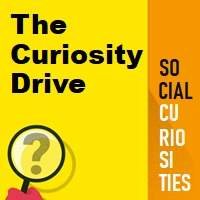
The Curiosity Drive Theory
Curiosity drive theory suggests that people desire coherence and understanding in their thought processes. When this coherence is disrupted by something that is unfamiliar, uncertain, or ambiguous, it is curiosity-drive that attempts to gather information and knowledge of the unfamiliar to restore coherent thought processes.
This theory relates to the undesirable experiences of “uncertainty”. The reduction of these unpleasant feelings, in turn, is rewarding.
Through this theory, the general concept dictates that curiosity is developed strictly out of the desire to make sense of unfamiliar aspects of one’s environment through interaction of exploratory behaviors. Once understanding of the unfamiliar has been achieved and coherence has been restored, these behaviors and desires will subside.
Curiosity-driven behavior is often defined as behavior through which knowledge is gained, and should therefore encompass all behaviors that provide access to or increase sensory information.
Subsets of this theory differ on whether curiosity is a primary or secondary drive and if this curiosity-drive is originated due to one’s need to make sense of and regulate their environment or if it is caused by an external stimulus. Causes can range from basic needs that need to be satisfied (e.g. hunger, thirst) to needs in fear induced situations.
Each of these subset theories state that whether the need is primary or secondary curiosity is developed from experiences that create a sensation of uncertainty or perceived unpleasantness. Curiosity then acts as a means in which to dispel this uncertainty.
By exhibiting curious and exploratory behavior, one is able to gain knowledge of the unfamiliar and thus reduce the state of uncertainty or unpleasantness. This theory, however, does not address the idea that curiosity can often be displayed even in the absence of new or unfamiliar situations.
The observation of curiosity even in the absence of novel stimuli pinpoints one of the major shortcomings in the curiosity-drive model.


